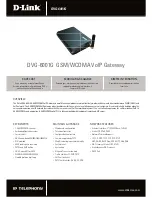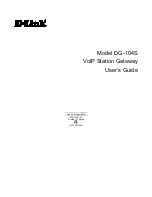
Ubee Interactive
Using the Wireless Radio Option
Ubee DDW366 Dual-Band Concurrent Advanced Wireless Gateway Subscriber User Guide • February 2014
68
Label
Description
Wireless Interfaces
Displays the unique SSID for the DDW366 or uses the
default. This example shows the setting when the device is in
the 2.4GHz band. Refer to
Understanding Default Values and
Logins on page 8
for more information on the SSID.
Wireless
Displays the wireless radio’s status, Enabled or Disabled.
Country
Defines the country where this device is used. The default
value is Q2.
Output Power
Output power setup can be one of the following 4 options:
25%, 50%, 75%, or 100%.
802.11 Band
Sets the 802.11 band to either 2.4GHz or 5GHz.
802.11 n-mode
Sets the wireless networking standard. Select Auto to use
802.11 n mode when possible. This mode has a significant
increase in the maximum raw OSI physical layer data rate
from 54 Mbit/s to a maximum of 600 Mbit/s with the use of
four spatial streams when at a channel width of 40 MHz.
802.11 N Support Required
Defines whether 802.11n support is required (on) or not (off).
On forces the gateway to 802.11n mode and clients must
support 802.11n.
Bandwidth
Sets the bandwidth to 20MHz or 40MHz. For 40 MHz, set the
sideband to lower or upper 20MHz. 40 MHz channels double
the channel width. This allows doubling the PHY data rate
over a single 20 MHz channel.
Sideband for Control Channel
Only when using 40MHz Bandwidth should you choose the
Lower or Upper 20MHz.
















































